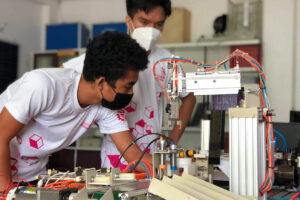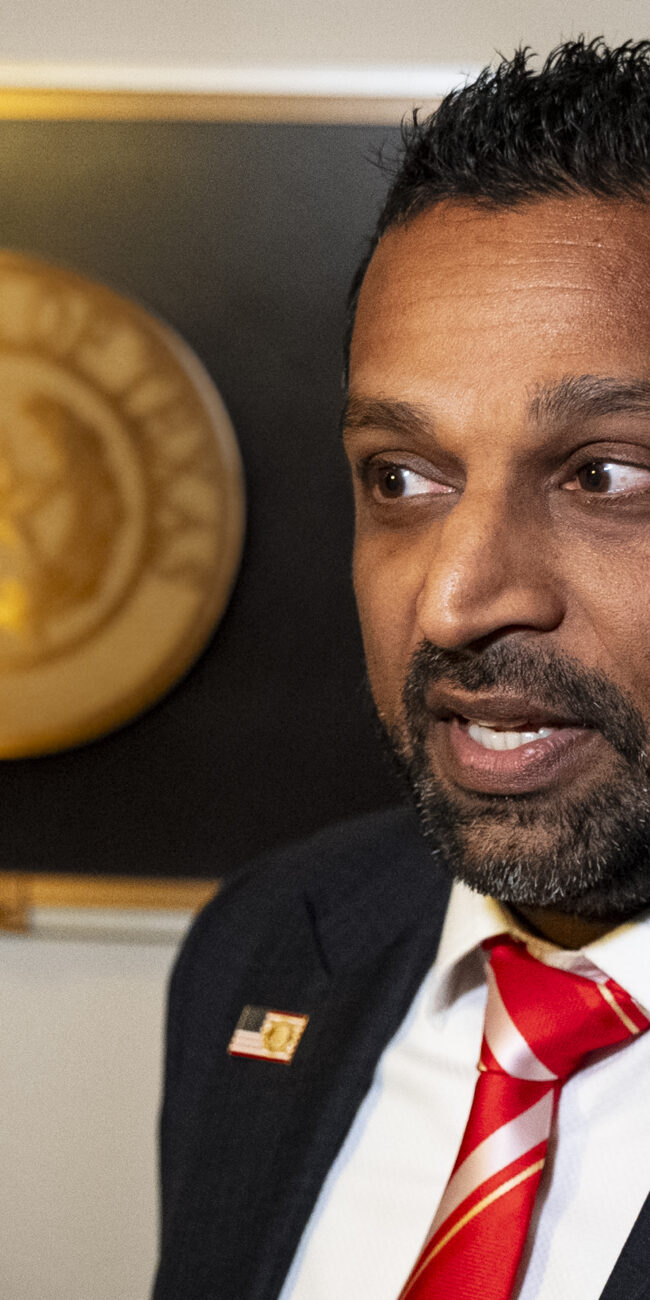
TESDA: The stepchild of Philippine education
The Technical Education and Skills Development Authority (TESDA) was established through the enactment of Republic Act No. 7796 — otherwise known as the “Technical Education and Skills Development Act of 1994,” which merged the National Manpower and Youth Council (NMYC) of the Department of Labor and Employment (DoLE), the Bureau of Technical and Vocational Education (BTVE) of the Department of Education, Culture and Sports (DECS), and the Apprenticeship Program of the Bureau of Local Employment (BLE) of the DoLE.
The fusion of the above offices was one of the key recommendations of the 1991 Report of the Congressional Commission on Education (EdCom), which undertook a national review of the state of Philippine education and manpower development.
Moreover, EdCom I proposed the trifocalization of the Philippine education system into three governing bodies; the Commission on Higher Education (CHED) for tertiary and graduate education; the Department of Education (DepEd) for basic education; and TESDA for technical-vocational and middle level education.
Thus students after completing their basic education (K-12) have the option of pursuing higher learning and earning an academic degree (usually a Bachelor Arts degree) or pursuing a technical or vocation certificate. Those taking the vocational option are deemed academically inferior, unworthy of receiving an academic degree.
It should not surprise us that students, probably at the urging of their parents, decide to enroll in CHED governed schools rather than in TESDA governed schools despite their inclination towards the technical/vocational programs.
In a paper published by the Philippine Institute of Development Studies (PIDS) August 2022, entitled “Philippine Education: Situationer, Challenges, and Ways Forward,” Drs. Aniceto Orbeta, Jr. and Vicente Paqueo noted that a TESDA study covering 2018 graduates shows that high school graduates are no longer the primary students of Vocational Education and Training (VET). The largest group of VET graduates in 2018 were college graduates and beyond (36%). This was followed by university undergraduates (23%). The old curriculum high school graduates and the new curriculum junior high school (JHS) graduates made up a third at 16%. Thus, students who attend TESDA courses pursue a higher CHED academic degree before taking a lower TESDA certificate.
To compound the problem, in February 1994, President Fidel V. Ramos signed into law Republic Act No. 7686 or the Dual Training System Act of 1994 which calls for the institutionalization of the Dual Training System (DTS). Adopted from the German model, the law mandated TESDA with the responsibility for its implementation.
The DTS, as its name suggests, is a training modality that combines theoretical and practical training. It is called dual training because learning takes place alternately in two venues: the school or training center and the company or workshop.
In DTS, the school and workplace share the responsibility of providing trainees with well-coordinated learning experiences and opportunities.
This close cooperation between the school and the company ensures that the trainees are fully equipped with employable skills, work knowledge, and attitudes at the end of the training.
The general and occupation-related theoretical instruction provided by the school is complemented by on-the-job training in the workplace. Trainees under the DTS spend at least 40% of the training/learning time in school and 60% on practical training in the company.
The problem is, first of all, conceptual: the DTS was adopted from Germany which is a highly industrialized economy. In contrast, the Philippines is a highly service-oriented economy. A service economy like the Philippines is usually made up of trading, distribution, health services, tourism, and education, requiring jobs that are not technical in nature. In contrast, four sectors dominate German industry: the automotive, mechanical engineering, chemical, and electrical industries. Global players are Volkswagen, Daimler, BMW (all automotive), BASF, which is the world’s largest chemical company with around 118,000 employees, and Siemens (electrical). They are the industry counterparty essential to the success of DTS. The Philippines has no comparable companies.
Only South Korea is comparable to Germany and it is the only other significant country that has adopted the German model. Workers in industry tend to remain in the company or at least in the industry, making the acquisition of a degree unnecessary, while the opposite is the case of workers in service industries. They tend to switch jobs and industries more frequently and so need a degree as they seek outside job opportunities.
Secondly are the results. TESDA lodged the DTS in its Enterprise Based Training (EBT) programs. The EdCom II Year One reported that despite its efficacy in providing skills and guaranteeing superior labor market outcomes for graduates, enterprise-based training (EBT) and apprenticeship programs remain the least popular modality in TVET. Despite the strong emphasis placed by the first EdCom and by TESDA — the agency targeted increasing the EBT share from 4% in 2016 to 40% by 2022 — enrollment remains low. In fact, in 2022, it accounted for only 9% of total TVET enrollment. On the other hand, enrollment in institution-based and community-based training (shorter-term skills training that do not necessarily lead to certification) accounts for the bulk of TVET enrollment.
Part of the reason for the low take up is due to low industry participation. EdCom II noted that industry participation remains limited, and policies are often too slow to adjust to industry needs. As of December 2023, there were 40 TESDA-recognized industry boards at varying levels (national, regional, and provincial). These were concentrated in only eight industries: agri-fishery (12), information and communications technology (ICT) (eight), tourism (six), manufacturing (five), construction (four), creatives (two), logistics (two), and garments (one).
Even in agriculture, EdCom II noted that the Department of Agriculture’s Agricultural Training Institute still stressed the inability of the current system to address the specific needs of the agricultural sector, citing the inadequacy of the current qualifications framework as well as the lack of infrastructure, facilities, and assessors in agriculture and fisheries.
In both the above instances, the public policy makers never asked the students what they wanted. The only person who asked was the late Brother Andrew Gonzales, president of De La Salle University (DLSU) and founder of the College of Saint Benilde.
Benilde was conceived in response to what the students wanted.
Firstly, Benilde recognized that students taking its courses possess intelligences different but equal to the intelligences of those taking the liberal arts programs of DLSU. They therefore required a different education system. The college uses the Howard Gardner’s theory of multiple intelligences, where each person is said to possess varying levels of different intelligence which determine his or her cognitive profile.
The theory is implemented through learner-centered instruction where classes are taught according to the student’s understanding of the subject and recognizes the uniqueness of each learner. Learner-centered also refers to a learning environment that pays attention to the knowledge, skills, attitudes, and beliefs that learners bring to the educational setting.
Moreover, with industry practitioners as mentors, students learn from professionals who share their expertise on the tools of the trade and who bring their insider’s perspective into the Benildean classroom. The school argues that teachers tell you why but mentors also tell you how.
Secondly, Benilde recognized that students enroll in the school not only to learn a trade but also to round off their education. Thus, in arts management, students earn a Bachelor of Arts in Arts Management by taking CHED General Education mandated courses as well as arts management courses. Unlike in the present situation of TESDA students who first earn a bachelors degree and then take non-degree TESDA courses, these two are now combined into just one program.
Logically, the College of Saint Benilde should be under TESDA. But under the present set-up where all degree programs of schools fall under the jurisdiction of CHED, Benilde is under CHED.
To elevate TESDA from being the stepchild of Philippine education, TESDA should be made the equal of CHED and given jurisdiction over trade schools like the Benilde.
Jurisdiction means all those college degree programs which do not require passing the board exams required by the Professional Regulatory Commission (although those that require PRC certification still fall under the jurisdiction of CHED). Moreover, the pure liberal arts degree programs such as history, literature, etc., as well as the legal degrees under the supervision of the Supreme Court, will also continue to be under the jurisdiction of CHED.
To be clear we refer to jurisdiction over college degree programs and not to the schools. Thus, the degree programs of the College of Saint Benilde such as the Accounting degrees will be under the jurisdiction of CHED while the Business Administration degrees will be under the jurisdiction of TESDA. This is not an unusual arrangement. In schools with grade school, high school, and college programs, the grade school and high school are under the jurisdiction of the Department of Education while the college is under the jurisdiction of CHED.
Dr. Victor S. Limlingan is a retired professor of the AIM and a fellow of the Foundation for Economic Freedom. He is presently chairman of the Cristina Research Foundation, a public policy adviser of Regina Capital Development Corp., and a member of the Philippine Stock Exchange.

